By Elizabeth Landry
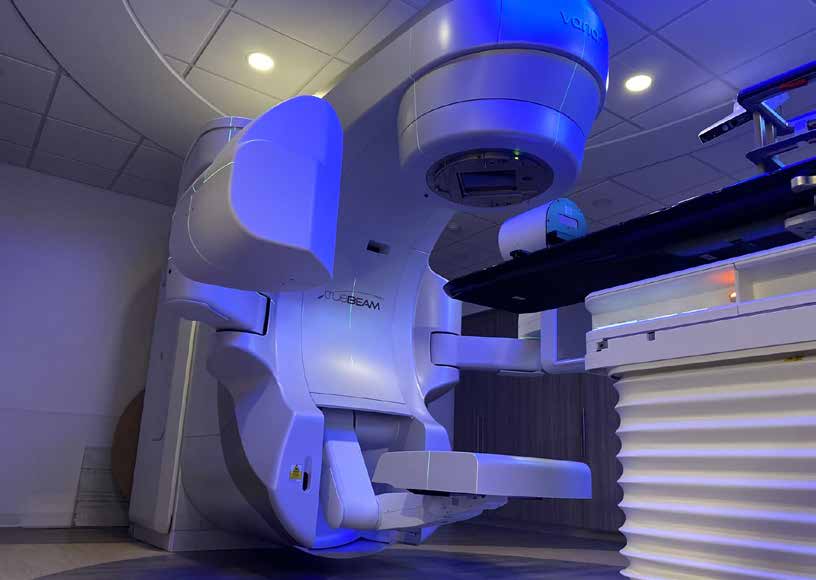
Providing premiere, patient centered care for patients of all types of adult cancers, Bassett Cancer Institute is a major highlight within the larger Bassett Healthcare Network, a health system that spans eight counties and 5,600 square miles in Central New York. With cancer treatment centers in Cooperstown, Oneonta, Herkimer and Cobleskill, Bassett Cancer Institute welcomes patients from both nearby and far beyond the footprint of its rural communities.
A growing healthcare organization, Bassett provided over 14,000 cancer treatments in 2024 alone, offering care to almost 1,000 cancer patients. From oncology and hematology to more specialized care including gynecologic cancer treatments, radiopharmaceutical treatments and clinical trials, the multidisciplinary team at Bassett aims to achieve high patient satisfaction for adults with varying diagnoses and treatment needs, as Alfred Tinger, MD, Chief and Medical Director at Bassett Cancer Institute, emphasized.
“The cancer center routinely gets excellent marks for patient satisfaction – no one’s perfect, but we’re well above 90% consistently for patient satisfaction. That makes Bassett a great place to work because we’re doing what we’re called to do: get rid of cancer and take care of patients with cancer,” said Dr. Tinger.
Breakthrough Treatments and Clinical Trials
The radiation oncology team at Bassett, led by Timothy Korytko, MD, Radiation Oncologist-in-Chief, provides treatment technologies that offer patients the most effective cancer treatments available.
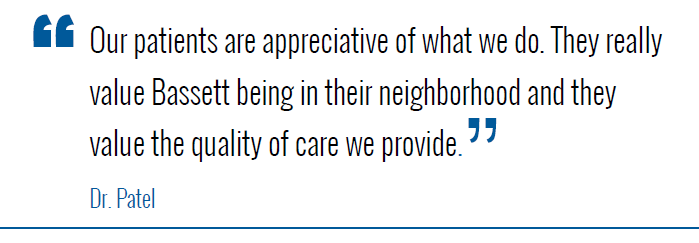 Dr. Korytko said that in the last five years, the radiation oncology field has seen a big increase in the types of radiopharmaceutical drugs available for cancer treatment. He highlighted two drugs specifically that are available at Bassett: Lutathera, a special treatment for neuroendocrine cancer, and Pluvicto, a radioactive IV treatment used for prostate cancer. Dr. Korytko shared that patients come to Bassett for these kinds of treatment options, and he said the rural setting helps the team provide the best care for patients.
Dr. Korytko said that in the last five years, the radiation oncology field has seen a big increase in the types of radiopharmaceutical drugs available for cancer treatment. He highlighted two drugs specifically that are available at Bassett: Lutathera, a special treatment for neuroendocrine cancer, and Pluvicto, a radioactive IV treatment used for prostate cancer. Dr. Korytko shared that patients come to Bassett for these kinds of treatment options, and he said the rural setting helps the team provide the best care for patients.
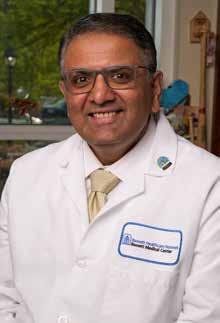 “We’re giving novel therapies, which sets us apart from just being a rural hospital that provides the basics. We were one of the earliest sites giving Lutathera and Pluvicto. We have a team that’s very committed to bringing the best care we can to our patients. And we treat them in a place that’s a comfortable, community based treatment location. You could go to a larger, metropolitan center and get lost in the traffic and crowds, or you can come here and get treated a little bit more like family. To be able to offer this type of care here is really a testament to our investment in doing the right thing,” said Dr. Korytko.
“We’re giving novel therapies, which sets us apart from just being a rural hospital that provides the basics. We were one of the earliest sites giving Lutathera and Pluvicto. We have a team that’s very committed to bringing the best care we can to our patients. And we treat them in a place that’s a comfortable, community based treatment location. You could go to a larger, metropolitan center and get lost in the traffic and crowds, or you can come here and get treated a little bit more like family. To be able to offer this type of care here is really a testament to our investment in doing the right thing,” said Dr. Korytko.
“The technology allows us to deliver radiation much more precisely to maximize killing the cancer and minimize side effects on other organs,” explained Dr. Tinger. “Dr. Korytko pioneered bringing this technology here to Bassett, and he’s grown the program immensely, so it’s basically become a regional referral center for all of Upstate New York.”
Bassett also offers additional treatments through 11 clinical cancer trials. Dr. Korytko noted that the team has collaborated with a company called Alpha Tau Medical to investigate a new implanted radiation treatment, which may lead to novel approaches for treating cancer in the future. Alpha DaRT™ (Diffusing Alpha-emitters Radiation Therapy) is the first localized anticancer therapy to leverage the specific therapeutic properties of alpha particles to treat solid tumors.
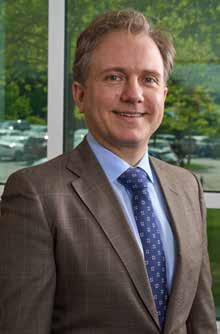 “We’re involved in radiation clinical trials using an investigational radiation implant to treat skin cancer,” Dr. Korytko stated. “We’ve been enrolling patients in a study for recurrent skin cancer who have limited treatment options. We’re one of the first sites in the country to be involved in this clinical trial and are the first in the U.S. to open a clinical trial investigating this device in treating pancreatic cancer.”
“We’re involved in radiation clinical trials using an investigational radiation implant to treat skin cancer,” Dr. Korytko stated. “We’ve been enrolling patients in a study for recurrent skin cancer who have limited treatment options. We’re one of the first sites in the country to be involved in this clinical trial and are the first in the U.S. to open a clinical trial investigating this device in treating pancreatic cancer.”
Patient-Focused, Multidisciplinary Team
Treating a wide array of adult cancers, the multidisciplinary team at Bassett Cancer Institute works together to provide specialized care and treatments that are personalized to each unique patient. Dr. Korytko explained how patients benefit from collaboration among the healthcare providers at Bassett.
“Each patient and each circumstance is unique. A lot of times we make decisions as a team. One of the nice things about Bassett and one of the reasons I wanted to join the team here is because we really focus on caring for the patient collaboratively. We discuss and make individualized decisions for patients based on what makes sense for their specific circumstances,” said Dr. Korytko.
 The team of over 100 diverse staff members at Bassett Cancer Institute is comprised of nurses (including clinic nurses, infusion nurses, and nurse navigators), support staff (including social workers, financial counselors, nutritionists, and administrative staff) and radiation therapists. Anush Patel, MD, Chief of Medical Oncology and Hematology, shared how patients recognize the high-quality care offered by this multidisciplinary team.
The team of over 100 diverse staff members at Bassett Cancer Institute is comprised of nurses (including clinic nurses, infusion nurses, and nurse navigators), support staff (including social workers, financial counselors, nutritionists, and administrative staff) and radiation therapists. Anush Patel, MD, Chief of Medical Oncology and Hematology, shared how patients recognize the high-quality care offered by this multidisciplinary team.
“Our patients are appreciative of what we do. They really value Bassett being in their neighborhood and they value the quality of care we provide. Specific to the cancer center, I think we have extremely collaborative networks here that include our extensive, patient focused support system. We’re a very small oncology group and we know each other quite well. We’re accessible to each other almost all the time. I think that really makes care much more seamless than you would otherwise find in a fragmented system. It 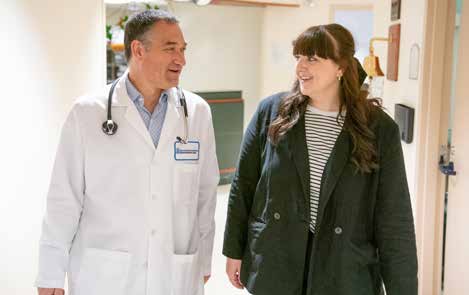 makes us stand out in the area, and even at the national level, that we are providing fantastic care in a rural setting,” said Dr. Patel, who also highlighted the unique transportation support system offered at Bassett, which helps ensure patients who face transportation challenges across the health system’s rural communities can come from their homes to the cancer center for appointments and treatments.
makes us stand out in the area, and even at the national level, that we are providing fantastic care in a rural setting,” said Dr. Patel, who also highlighted the unique transportation support system offered at Bassett, which helps ensure patients who face transportation challenges across the health system’s rural communities can come from their homes to the cancer center for appointments and treatments.
Specialized, Seamless Cancer Care
Within the multidisciplinary team at Bassett Cancer Institute are highly specialized healthcare providers who care for patients with specific types of cancer and other disorders. As the Chief of Hematology and Oncology, Dr. Patel provides treatment for patients with leukemia, lymphoma and non cancerous disorders like blood clots or hemophilia.
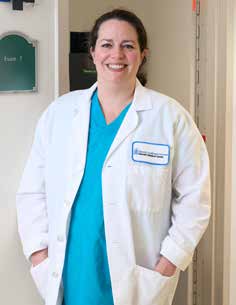 “We are trained especially in noncancerous blood disorders, along with malignant hematology, which is leukemia and lymphoma, as well as medical oncology, which involves solid tumors. It’s quite seamless because someone who gets chemotherapy might have a complication of low blood count, so we need to be quite well trained and comfortable with dealing with the anticipated complications,” explained Dr. Patel.
“We are trained especially in noncancerous blood disorders, along with malignant hematology, which is leukemia and lymphoma, as well as medical oncology, which involves solid tumors. It’s quite seamless because someone who gets chemotherapy might have a complication of low blood count, so we need to be quite well trained and comfortable with dealing with the anticipated complications,” explained Dr. Patel.
Another highly specialized and trained physician at Bassett Cancer Institute is Elizabeth Pelkofski, MD, Gynecologic Oncologist, who joined the Bassett team in 2023.
With extensive experience in gynecologic oncology, Dr. Pelkofski provides diagnosis and treatment for a wide array of cancers, including cancers of the cervix, ovaries, uterus, fallopian tubes, vagina, vulva and peritoneum, as well as cancers associated with pregnancy. Treatment options she offers are complex pelvic surgery, chemotherapy, immunotherapy, radiation therapy, hormone therapy and assistance with clinical trials, depending on specific patient needs.
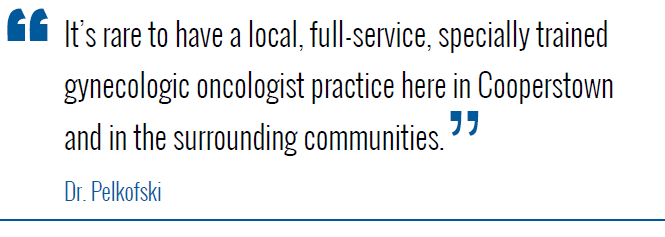 “Gynecologic oncology is a very specialized surgical subspecialty, so patients in rural areas can be very underserved and must travel very far for care. It’s rare to have a local, full-service, specially trained gynecologic oncologist practice here in Cooperstown and in the surrounding communities. With all the therapies we provide, between surgery visits, chemotherapy, radiation and more, our relationship with patients isn’t a one-time point of care. That’s a big reason why it’s such a benefit to have localized care in a smaller center with more focus on patients and their needs,” said Dr. Pelkofski.
“Gynecologic oncology is a very specialized surgical subspecialty, so patients in rural areas can be very underserved and must travel very far for care. It’s rare to have a local, full-service, specially trained gynecologic oncologist practice here in Cooperstown and in the surrounding communities. With all the therapies we provide, between surgery visits, chemotherapy, radiation and more, our relationship with patients isn’t a one-time point of care. That’s a big reason why it’s such a benefit to have localized care in a smaller center with more focus on patients and their needs,” said Dr. Pelkofski.
Although a referral is needed for patients to see Dr. Pelkofski, she offers rapid appointment access for patients with complex gynecologic conditions and cancers. Practitioners who wish to refer a patient should contact Bassett Cancer Institute at 607-547-3336.
“I think all oncologists work hard to see patients as quickly as possible, not only because it’s so stressful to have a cancer diagnosis or a potential diagnosis, but also because patients often experience debilitating symptoms. They may have bleeding or be in a lot of pain because of their cancer,” shared Dr. Pelkofski. “It’s not unheard of, depending on the condition and the patient, to be seen the same day or the next day, and with invasive cancer almost always within a week. We try to be fast.”
Expanding the Network of Dedicated Providers
Despite being a multidisciplinary team serving and treating patients with many different types of cancer, the physicians at Bassett Cancer Institute seem to have an important thing in common with each other: a passion for the team of people they work with, especially regarding how each provides a high level of care for patients.
“After I was trained at Bassett, I went out to a larger institution, and the reason I came back to Bassett is the people. The people that we work with every day genuinely want to make a difference in patients’ lives. We’re very patient focused and we truly take pride in providing exceptional cancer care to our community,” said Dr. Patel.
Dr. Pelkofski echoed Dr. Patel’s sentiments, highlighting the elevated culture at Bassett that allows patients to stay at the center of the team’s focus.
“It’s a really wonderful culture. Everyone goes above and beyond, and the focus is on work and taking care of patients. I think culture can be the hardest thing for a company to create, and we just have it here,” she said.
Dr. Korytko highlighted the autonomy providers have within Bassett’s network of more than 525 practitioners, explaining how opportunities arise not only for providers to grow their careers but also for the expansion of treatment technologies at the facility.
“One of the reasons I came to Bassett was because of the opportunities. The way the leadership is structured, there’s a focus on each physician’s unique skills. Physicians really drive the direction of patient care. Subsequently, when new technologies become available, the hospital tries to help us get those new technologies here as much as they can. To be in a place that is so supportive of these endeavors has always been really important to me,” Dr. Korytko said.
As new team members are added at Bassett Cancer Institute, and as they care for more patients across Central New York, plans are being made for exciting facility expansions. Funding is currently being raised to expand and modernize Bassett Cancer Institute’s oncology unit at FoxCare Center in Oneonta, one of the network’s most utilized cancer treatment centers in a university town with a larger population. The goal is to provide an enhanced environment for patients and practitioners alike.
 “We’re kind of outgrowing our space, so we’re investing in a new cancer center by building out and expanding the oncology unit inside FoxCare Center,” stated Dr. Tinger. “The plan is to expand the space, so we’ll have more room for offices and exam rooms, including private rooms for infusions. We have pending plans for expansion in our other offices, as well.”
“We’re kind of outgrowing our space, so we’re investing in a new cancer center by building out and expanding the oncology unit inside FoxCare Center,” stated Dr. Tinger. “The plan is to expand the space, so we’ll have more room for offices and exam rooms, including private rooms for infusions. We have pending plans for expansion in our other offices, as well.”
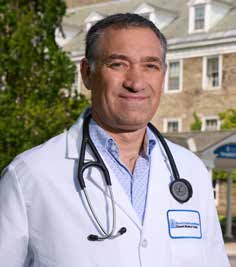 As the teams and the locations grow, however, the mission of Bassett Cancer Institute, as described by Dr. Tinger, will remain the same: “Our mission is to take great care of patients with cancer. Hearing you have a cancer diagnosis puts someone in a very vulnerable position. We exist to remove the vulnerabilities and give people hope.”
As the teams and the locations grow, however, the mission of Bassett Cancer Institute, as described by Dr. Tinger, will remain the same: “Our mission is to take great care of patients with cancer. Hearing you have a cancer diagnosis puts someone in a very vulnerable position. We exist to remove the vulnerabilities and give people hope.”
Learn more about Bassett Cancer Institute by visiting bassett.org/cancer. Call 607-547-3336 to make a patient referral or inquire about Bassett’s clinical trials.


 Recent conversations with families seeking mental health resources have highlighted the severe challenges in accessing psychiatric care in our community. What began as routine inquiries have exposed a healthcare system stretched beyond capacity, with primary care physicians increasingly unable to connect patients with psychiatric specialists. The backlog, initially attributed to COVID-19 disruptions and workforce shortages, has reached critical levels that demand innovative solutions.
Recent conversations with families seeking mental health resources have highlighted the severe challenges in accessing psychiatric care in our community. What began as routine inquiries have exposed a healthcare system stretched beyond capacity, with primary care physicians increasingly unable to connect patients with psychiatric specialists. The backlog, initially attributed to COVID-19 disruptions and workforce shortages, has reached critical levels that demand innovative solutions.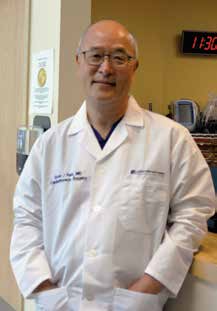 Soon J. Park, MD, renowned both locally and internationally for his expertise and scientific contributions to cardiothoracic surgery, has joined the Albany Med Health System. He will serve as surgical director of cardiovascular services at Albany Medical Center, and he will collaborate with colleagues across the System to elevate a coordinated, regional approach to cardiovascular care.
Soon J. Park, MD, renowned both locally and internationally for his expertise and scientific contributions to cardiothoracic surgery, has joined the Albany Med Health System. He will serve as surgical director of cardiovascular services at Albany Medical Center, and he will collaborate with colleagues across the System to elevate a coordinated, regional approach to cardiovascular care.